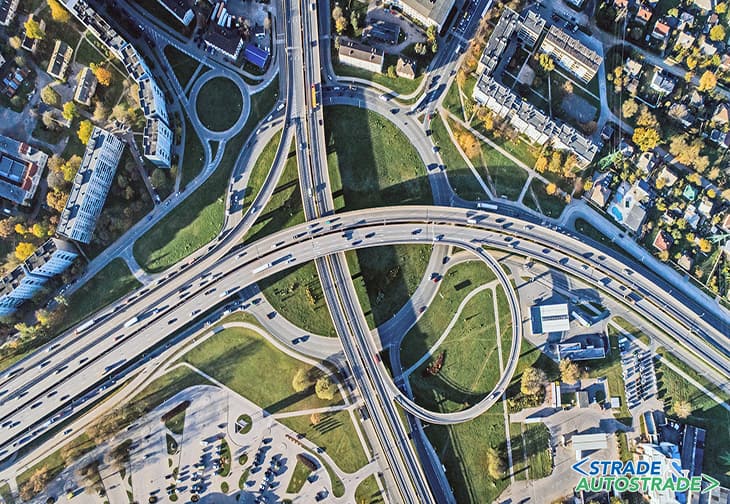Sustainable engineering and construction practices ![]() Per la versione in Italiano: https://www.stradeeautostrade.it/ambiente-e-territorio/pratiche-di-ingegneria-e-di-costruzione-sostenibili/
Per la versione in Italiano: https://www.stradeeautostrade.it/ambiente-e-territorio/pratiche-di-ingegneria-e-di-costruzione-sostenibili/
Our social system has changed at the same speed of the development of technology and infrastructure, an integral part of our civilization. The creation of a communication route is made up of a series of activities such as the design, extraction of materials, construction, use and possible dismantling.
These activities change the topography, affect the flora and fauna, the erosion of the area and air, soil, noise pollution.
Due to the strong impact on the ecosystem, sustainable engineering and construction practices are spreading in the construction of roads and highways.

an integral part of our civilization
Principles of sustainability for a road
The processing of raw materials for road pavements requires a quantity of primary energy and it has a higher CO2 emission compared to the construction of buildings [1].
The production of asphalt binders from crude oil is an energy-consuming process, which requires about 6 liters of fossil fuel to dry and heat a ton of aggregates for road construction [2].
A road that responds to sustainability principles can have the following characteristics:
- it must be designed to reduce its impact on the ecosystem and optimize its layout in order to safeguard the territory and reduce energy consumption by vehicles;
- it must adapt to future variations of use, such as an increase in the volume of traffic or an increase in pedestrian streets and cycle paths;
- must use innovative and low environmental impact materials;
- it must reduce energy consumption and be able to produce at least a part of the energy it consumes (for example for lighting).
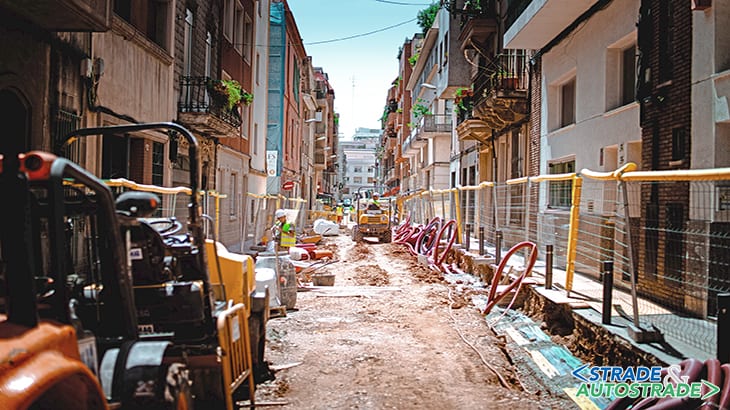
The design
Design methods influence soil morphology. Among the good design rules of a road there are the optimization and simplification of its layout, the management of rainwater runoff, erosion control, the protection of fauna thanks to the creation of dedicated passages and walkways.
The optimization of the horizontal alignment reduces the material used for construction and the space taken away from the natural territory. Vertical alignment affects the efficiency of vehicles traveling on the communication route and helps to save energy.
These solutions were among the first used to make road construction more sustainable. Today we are trying to increase energy savings and the use of low environmental impact materials and construction methods.
Low environmental impact materials
Recycled construction and demolition materials
The amount of material needed for road construction can be reduced by replacing raw materials with recycled materials from different sources. There are numerous research projects that study this possibility.
Among these we can mention the SAMARIS project (Sustainable and Advanced Materials for Road Infrastructures), of the European Union.
Cement, bricks, metals, wood and other construction materials can be used in place of aggregates of raw materials.
The improvement of processing techniques and the lowering of recycling costs allow them to be used more and more often for the construction of road foundations.
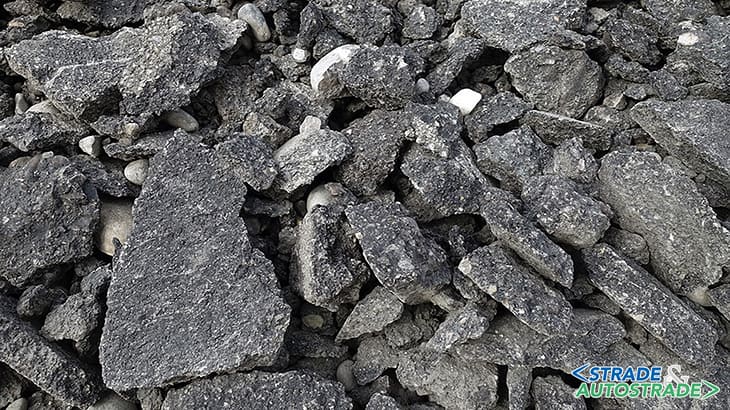
The glass
Recycled glass is obtained from processing waste, recycled bottles and demolition of buildings. It can be used both as an aggregate for the asphalt layer and as a material for the composition of the road base and sub-base.
Recycling and reuse of old road construction material
Another way of building roads with a lower environmental impact is to reuse the material used for the construction of old roads.
The asphalt removed for the remaking of the road surface can be processed and become recycled asphalt, a valid alternative to the extraction and use of new raw materials.
Crumb Rubber Modifier (CRM)
The use of recycled rubber from used tires is a very expensive technique from an energy point of view and for this reason it is not yet widespread. The extracted and recycled rubber, prepared in granulate, is used as an additive in asphalt mixtures.
Bitumen and cement alternatives
The use of products of natural origin alternative to bitumen is starting to spread, although still for small-scale and limited applications.
There are compounds based on vegetable oils and resins, a by-product of wood manufacture. Together with other biological materials they can form the basis for a bitumen of vegetable origin.
Another possibility is provided by “bio-cement” and “bio-concrete”. In the first case, bacteria are used to strengthen unconsolidated soils.
In the second case, bacteria are used as an additive in concrete, to extend their resistance and duration. A future reduction of costs and improvement of production technology will make these solutions more widespread.
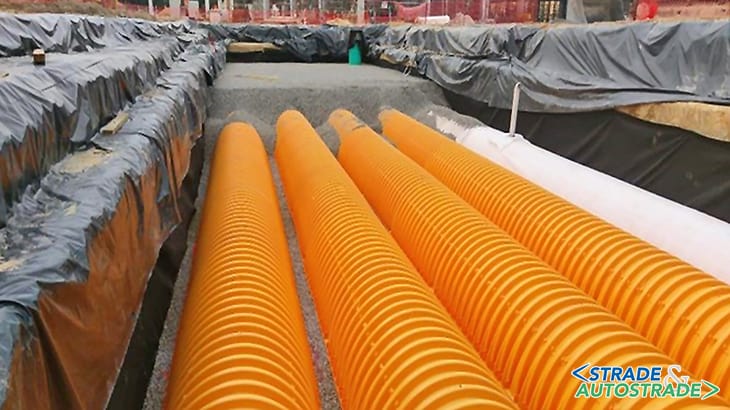
Energy saving
Street and traffic signal lighting represents a significant energy consumption and therefore, indirectly, also an increase in pollution for its production.
To reduce the waste of electricity can be used low-consumption lights such as LEDs, dimmers and switch off the lights alternately where their use is not constant.
The installation of photovoltaic panels integrated into the road layout can make an additional contribution to energy saving.
Case study: the Tullamarine Calder Interchange
The Tullamarine Calder Interchange is a main arterial in the Melbourne (Australia) road network, located near the city’s airport.
The reconstruction project involved a stretch of about 2 km, which began in October 2005 and ended in July 2007 [3]. In the execution of this project, various sustainable solutions were applied.
The road has been partially redesigned, improving its curvature and increasing visibility for drivers. During construction, 97% of the waste generated by the works was recycled, and recycled asphalt was used.
Biodiesel was used as fuel for construction vehicles. For the drainage of rainwater along the roadside, recycled polyethylene pipes were used. This has allowed to reduce both installation times and costs.
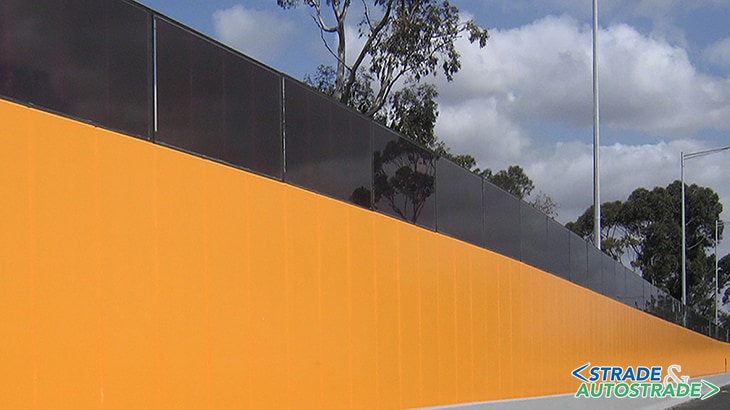
The electricity generated by the photovoltaic system is used to power the surveillance cameras (CCTVs?) and lighting.
The climatic and environmental crises, the increasingly scarcity of resources, are evidences that shake our consolidated certainties and habits and make us aware that an inversion of direction is urgently needed in our development model to evolve towards a civilization that is compatible with the planet in which we live.
Transport infrastructure and communication routes cannot escape from this vision because, through them, flows of goods, people and energy move to reach the ends of the civilization of man in the 21st century.
Bibliography
[1]. I.E. Agency – “Energy technology transitions for industry – strategies for the next industrial revolution”, tratto da www.iea.org/textbase/nppdf/free/2009/industry2009.pdf, 2011.
[2]. P. Newman – “Reducing the environmental impact of road construction”, 2012.
[3]. S.T. Muench – “Roadway Construction Sustainability Impacts”, Transportation Research Record: Journal of the Transportation Research Board, Construction 2010, pp. 36-45.
[4]. www.vicroads.vic.gov.au (s.d.)
Sustainable engineering and construction practices ![]() Per la versione in Italiano: https://www.stradeeautostrade.it/ambiente-e-territorio/pratiche-di-ingegneria-e-di-costruzione-sostenibili/
Per la versione in Italiano: https://www.stradeeautostrade.it/ambiente-e-territorio/pratiche-di-ingegneria-e-di-costruzione-sostenibili/

